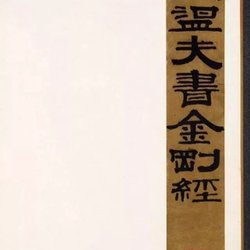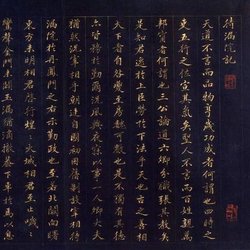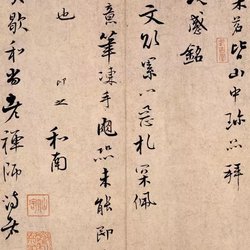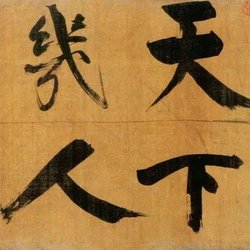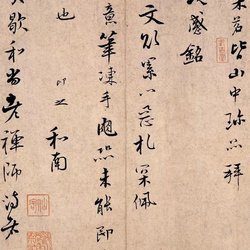Zhang Jizhi (1186-1263), a calligrapher of the Song Dynasty, was born in Liyang (now Hexian County, Anhui Province). Born into a prominent official family, he was the son of Zhang Xiaobo, a political advisor, the nephew of the patriotic poet Zhang Xiaoxiang, and the eighth grandson of Zhang Ji, a famous poet in the mid-Tang Dynasty. He has been the official supervisor of Pingjiang Prefecture Academy of Grain Science, general supervisor, and Sinongsi Cheng. He was specially awarded the title of Crown Prince and Tutor, and became an official in Zhimi Pavilion. Later I learned about Jiaxing, so I stopped talking.
Zhang Jizhi’s unique writing style
From our analysis of his calligraphy, Zhang Jizhi's writing should be tilted to the right. According to traditional teachings, this is the wrong way to hold the pen. However, the advantage is that it no longer blocks the line of sight. The pen barrel is straight without the need for writing, but the writing head is Wrong, this embarrassment may not be noticed by many of us writers for a long time. It is not until we develop cervical spondylosis or frozen shoulder that we realize it, but it is too late. So I would like to remind my friends to pay a little attention to their writing posture.
When Zhang Jizhi writes, the penholder does not point toward his nose, but to the right. As for whether the rightward direction is upper, middle or lower, it does not have to be rigid, it depends on how convenient the strokes are. But it must not be understood that he wanted to write "smoothly" or even "draft the front" in his writing. In modern times, only Kang Youwei used this method. Because of this "drafting the front" usage, Kang Nanhai's handwriting was once ridiculed by Mr. Bai Jiao from Shanghai. "Bad straw rope book", this is a digression. What we are talking about is Zhang Jizhi's writing during the resting stage before writing. After that, once Zhang Jizhi's pen is started, the penholder will no longer look like this. This point needs to be made clear.
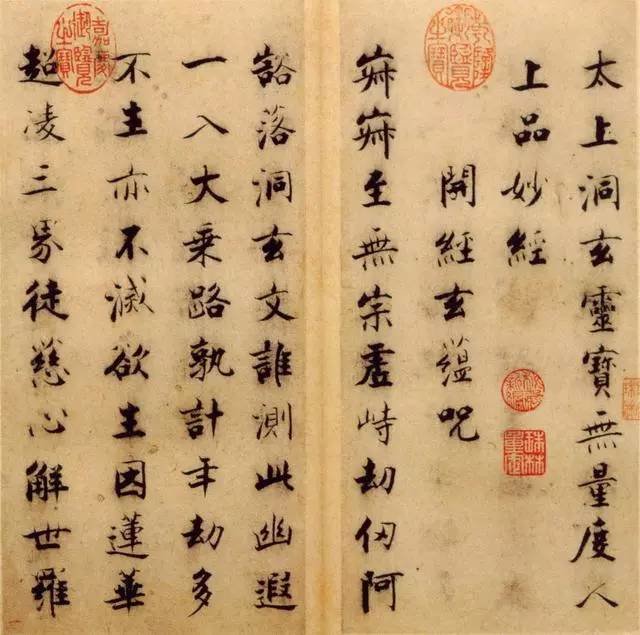
Zhang Jizhi's "Reflections on Saving People in Regular Script" (Part)
Next, let’s uncover the second mystery. This is related to his unique way of tying characters. He tilted his pen to the right, which is already unusual. What is even more shocking is that when he licked the brush on the inkstone, he deliberately licked the tip of the brush into a hook shape, roughly similar to the Arabic numeral 7 written upside down. Of course, no one has ever seen Zhang Jizhi do this, we are just guessing. However, please give it a try and use this method to write a few lines and see if it works for you? The Langhao pen cannot do this because its bristles are too strong. Even if it can be licked into a hook shape temporarily, it will return to its straight state after writing a few words. Only Yanghao and Jianhao can do this. As we mentioned earlier After talking about the pen, this time I talked about using it, so it is a matter of course.
The question of forward and flanker. This is a controversial historical issue, and we do not want to re-open the dispute here, but only discuss Zhang Jizhi's calligraphy. Our problem is that in Zhang Jizhi's calligraphy, there is no rigid front, but only the use of side forwards and false fronts! The definition of this "false forward" can be simply explained as it looks like a forward, but is actually a side forward. Its use involves extremely superb swing skills of the wrist, and it cannot be explained simply by "reversing in and out".
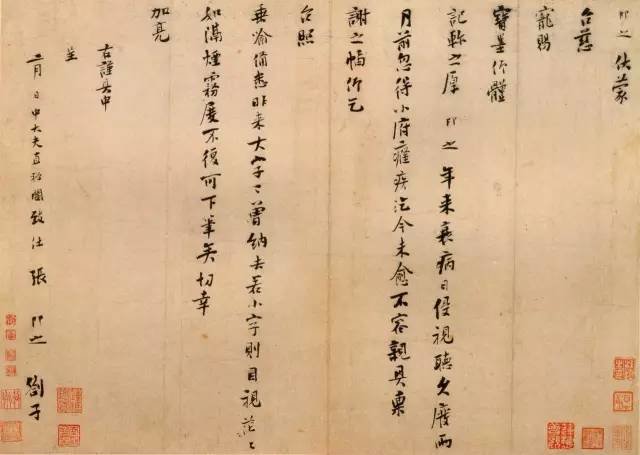
Zhang Jizhi's "Tai Ci Tie"
Liang Jizhi from the Qing Dynasty could not see Zhang Jizhi's sense of beauty. He was harsh on Zhang Jizhi in "Pingshu Tie": "The characters in Zhang Jiliao's "Diamond Sutra" may be thin or thick, and they are all written with a pen. However, he cannot be Zhongzheng. In order to win over the ancients, they only rely on their cleverness, improper style, and evil thoughts. Compared with the thickness of Dongpo, the extension of the valley, the heroes of Yuanzhang, and the beauty of Junmo, they are much inferior. They cannot do this. For everyone, you can only become a famous person."
Regarding Zhang Jizhi's exquisite brushwork, beautiful structure, and especially the wonderful use of side edges, Liang Qian didn't just turn a blind eye, but after seeing it, he didn't know why he came there? So I could only hatefully use twelve words: "The ghost is clever, the style is not upright, and the evil thoughts are numerous." This is probably not a comment on calligraphy.
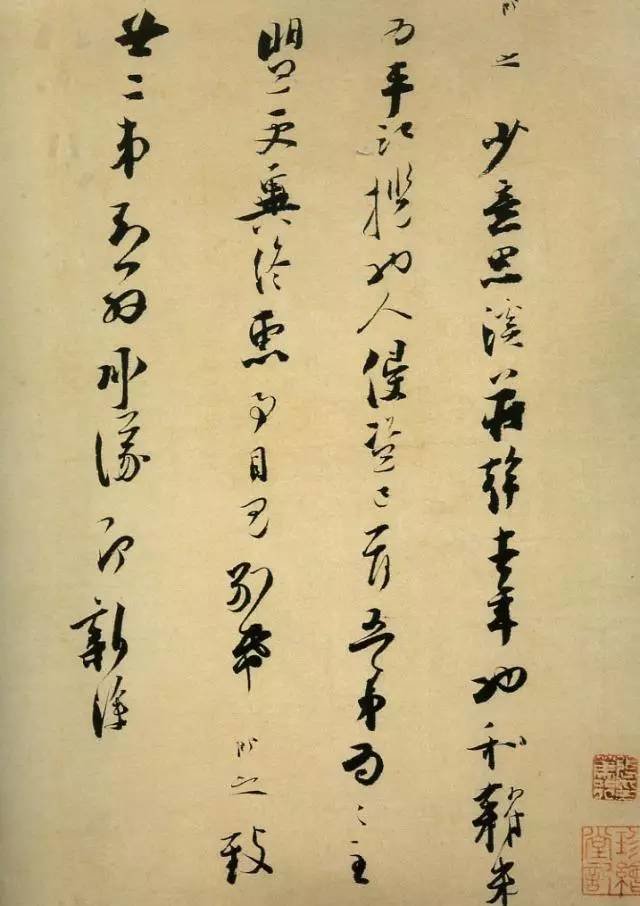
Zhang Jizhi's "Zhuang Qian Tie"
Shen Yinmo's "Calligraphy Talk" talks about the center: "The characters written by calligraphers have short, long and dense structures, fat and thin strokes, and are often different, but there are certain similarities, that is, the stipples are all center. Because this is The only brushwork in calligraphy, the brushwork recognized and followed by calligraphers of ancient and modern times."
No matter whether they are masters of modern calligraphy or great calligraphers in history, no one dares to object to adhering to the principle of Zhengfeng, but I am afraid that few people abide by it faithfully. For various reasons, most of them do it openly and covertly. set. From a scientific point of view, if the side forward is included in the category of front forward (center forward) and the definition of "side forward" is clearly distinguished, then Mr. Shen's words are undoubtedly correct (side forward). Feng: the tip of the pen enters the paper, the penholder tilts to the left, and it goes retrograde; the tip of the pen enters the paper, and the penholder tilts to the right, and it goes forward).
There is another question worth discussing, whether it is a forward or a side forward, how to use it? Each school has its own explanation for this issue, but since the beginning of the official script, the front method has been prepared. Later generations simply summarized it as: if you want to go right, go left first, and if you want to go down, go up. Zhu Lvzhen of the Qing Dynasty gave an accurate description in "The Essentials of Calligraphy": "Calligraphy has folding edges and overlapping edges, which are the starting points of writing. Those who use strong pens often fold the edges, and those who use weak pens tend to overlapping edges. For example, European calligraphy uses strong pens, There is not a single word at the beginning of the pen that does not break the edge; Zhang Chuoliao of the Song Dynasty and Dong Wenmin of the Ming Dynasty used weak pens, but there were many edges at the beginning of the pen."
Judging from the Dharma books left over from history, just as far as the writing is concerned, the Jin people are straightforward, the Tang people are strict in their laws, the Song people play Chu songs by themselves, the Yuan people simplify the complex, and the Ming and Qing Dynasties twist and turn. The calligraphy of Jin people is rare in the world, and the style of Tang people is hard to find in a lifetime. It is precisely the Song people who are not unreasonable and elegant, who opened the door to the Jin and Tang Dynasties for us. Among them, Zhang Jizhi's sideways application of calligraphy has given us the opportunity to study calligraphy today. Great inspiration to people.
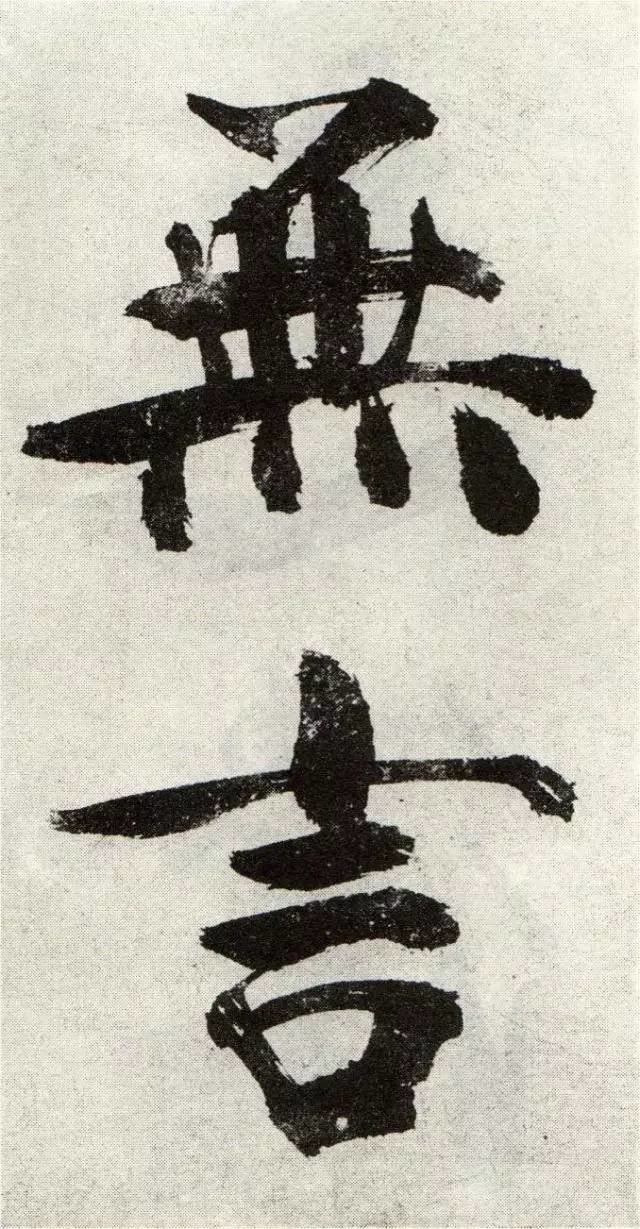
Zhang Jizhi's "Lian Jin Tan Lao's Poetry Regular Book"
The famous scholar Mr. Zhou Yuyan published a short book on the art of calligraphy in 1982 called "Questions and Answers on the Art of Calligraphy". There is a very interesting question and answer in the book. Let's read it:
Question: “How do you think this ‘edge’ should be used?”
Answer: "Mi Fu, a great calligrapher in the Northern Song Dynasty, said: Other people who are good at calligraphy 'only get one stroke', but 'I only get four sides'. What he means is that others can only use one kind of brushwork, but I have my own brushwork on all four sides. . Let me give you another joke: In the early Qing Dynasty, Zhou Lianggong edited and published "New Notes on Rulers and Slips", in which a person was quoted as saying about calligraphy: 'Eight-sided forwards are not enough, how can we only talk about center forwards'?!"
Mr. Zhou further commented: "At that time, some scribes were unruly and liked to exaggerate their words. They used a joking tone, which did not sound serious enough, but in fact they were 'hitting the right spot' and hit the crux of the 'positive' theory. It shows the actual variability of brushwork."
In order to let everyone know more about Zhang Jizhi, I found his calligraphy and presented it so that everyone can have a deeper understanding than me. So, let’s take a look at Zhang Jizhi’s calligraphy. His diverse brush strokes and his bold and beautiful side strokes can be admired by us?
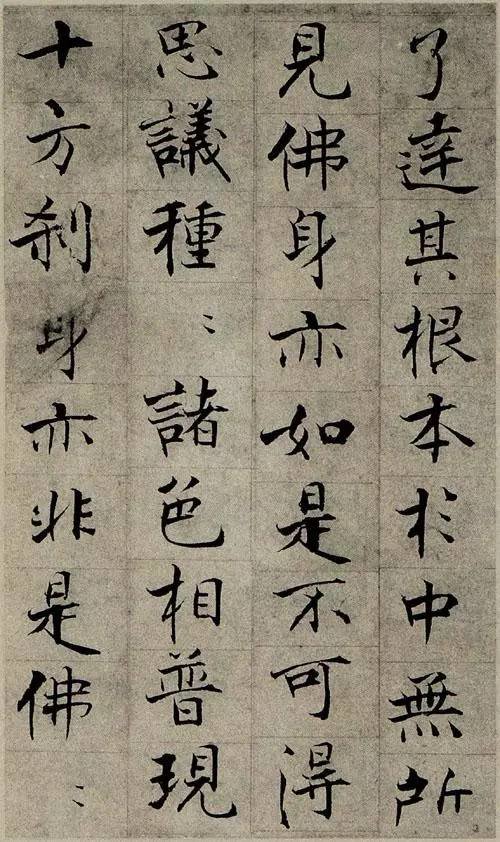
Zhang Jizhi's fragment of "Huayan Sutra" in small regular script
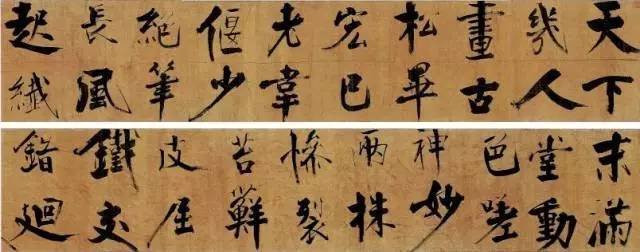
Zhang Jizhi's "Song of Two Pines"

